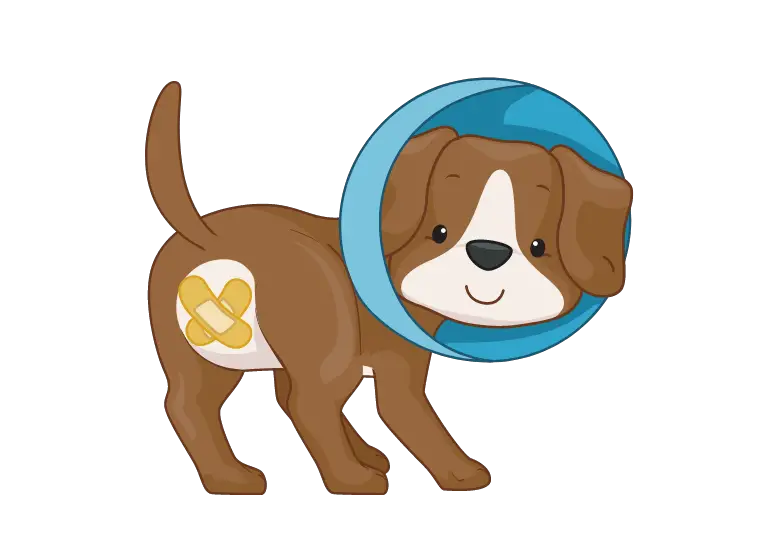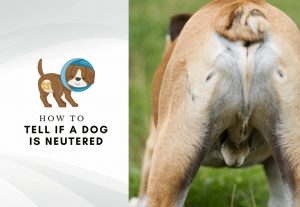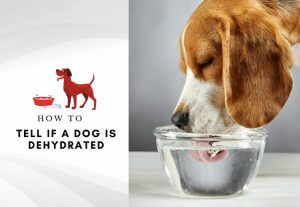If you have adopted a male dog from a shelter or maybe found a stray on the street and you want to know if he’s castrated, then this article is for you.
Here you will discover the benefits of neutering a dog, and also how to tell if a dog is neutered or not.

According to the American Society for the Prevention of Cruelty to Animals, about 3.1 million dogs are homeless each year. Half of these numbers are adopted, and sadly the other halves are euthanized.
Many of these dogs are taken to shelters because their owners can no longer care for them or have been abandoned.
A lot of these abandoned dogs are healthy and cute pets that would make wonderful companions. These horrible numbers make animal advocates constantly encourage the general public to neuter their male dogs.
The purpose of this article is to help you determine whether your new dog has already been neutered or not, but before I proceed, let’s look at some of the terms that will help you understand the topic better.
What Is Dog Neutering?

Dog neutering, also known as castration, is a familiar term used to describe the surgical procedure during which the testicles are removed to sterilize a male dog, thus stopping the dog’s ability to pregnant a female. By removing the reproductive organs, the desire or need to breed is also reduced.
On the other hand, spaying is the procedure of surgically removing the ovaries and uterus from a female dog.
Neutering male dogs prevents unwanted litters from being born and helps reduce the overpopulation of abandoned dogs in the rescue system.
Why Should I Have My Dog Neutered?
Neutering dogs at an early age is highly recommended by veterinarians and animal humane groups for several reasons. Neutered dogs are also less likely to wander from home in search of a mate, get into fights with other dogs, also they are less aggressive and less likely to bite. Neutering dogs greatly reduces the risk of dogs getting testicular cancer at a young age.
Now let’s look in detail at the reasons why neutering a male dog is a great idea:
- It reduces the risk of testis cancer: you should consider neutering your male dog if you plan to keep him as a pet. Neutering a male dog prevents him from testicular cancer. And if your dog has a testicle that is trapped instead of being down below the scrotum, it is very important to do an operation to remove it, as the trapped testicles are likely to become cancerous.
- Neutering reduces the number of unwanted dogs: It helps reduce the number of stray dogs and the number of dogs that enter the shelter by reducing the number of unwanted dogs. A neutered male dog can’t contribute to the problems of unwanted pregnancy and homeless pups.
- Reduce the tendency to roam: A male dog that has been neutered has less desire to stray; wandering in search of females can lead to parasites, infections, and car accidents. Also, being captured by the humane society is another danger of wandering around, leading to unsuccessful reuniting with the owner.
- It reduced the problem of prostate disorder: When a male dog is neutered before puberty, it prevents the development of the prostate gland due to a lack of testosterone (the male hormone produced by the testes). This is not a problem for dogs because the major function of the prostate is to support and transport sperm cells.
- Reduce Bad Behavior: neutering a male dog can help reduce or eliminate unwanted behaviors such as aggressive behavior, leg-lifting, and mounting in some dogs.
How to Tell if a Dog Is Neutered?
If you want to know whether your new male dog is neutered (castrated) or not, the following are some signs:
- Absence of the testicles: The easiest way to know a neutered dog is the absence of testicles. In addition to having no visible testicles in his scrotum, you should be able to see a scar underneath the sac.
- Behavioral changes: These are more obvious among neutered male dogs. One such behavior is that they are now less likely to hump other dogs, people, and inanimate objects. Less aggressiveness, urine marking, and roaming are other behavior changes you can observe in neutered male dogs.
- Increased appetite: a neutered male dog will have increased appetite, which will likely affect his weight. Owners should be advised to anticipate this change and adjust feeding accordingly.
Lastly, it is important to note that your male dog may continue to engage in full male testosterone behaviors as his male sex hormone levels decline after surgery. This can last up to six weeks.
It is important for you to know that he can still pregnant a female dog.
- 40 Lb. Bag – Purina One Smartblend Natural Healthy Weight Formula Adult Dry Dog Food
- Real Turkey Is The no.1 Ingredient
- Contains 25% Less Fat, 15% Fewer Calories Than Purina One Smartblend Lamb and Rice Formula
- Antioxidant Blend To Help Support A Strong Immune System
- Natural Sources Of Glucosamine Help Support Joint Health
Prices pulled from the Amazon Product Advertising API on:
Product prices and availability are accurate as of the date/time indicated and are subject to change. Any price and availability information displayed on [relevant Amazon Site(s), as applicable] at the time of purchase will apply to the purchase of this product.
FAQ

Neutering your male dog plays an important role in responsible dog ownership. You need to have all the information you need before making this important decision.
In this section, I will try to answer some of the most frequently asked questions about dog neutering so that you can make the best decision for yourself and your dog.
When to Neuter a Dog?
In some male dogs, the signs of sexual maturity appear earlier than others. A male dog can impregnate a female when he is as young as five months old.
Some signs of sexual maturity you can notice include humping, urine marking, and over-protectiveness. Some of these behaviors can start early and intensify as he continues to mature into 12 months, or even longer, depending on the size of the breed.
Small dogs reach puberty earlier and can often have the operation done earlier. Larger breeds may need to wait longer to develop properly before neutering. The recommended age for neutering a male dog is around six to nine months.
Is Neutering Cruel to Dogs?
Though it’s true that neutering will hurt your dog, the truth is that you are doing your dog a huge favor. It protects him from possible health problems like prostate disorder.
Can You Neuter a Dog With Cryptorchidism?
Some male dogs are cryptorchids, a condition in which one or both testicles do not descend into the scrotum. Smaller breeds are prone to developing this condition, but it has been reported in all dog breeds.
The Undescended testicle can be in the abdomen or the inguinal region. If the testicle is in the abdomen, then the operation will be more complex. The only treatment is to have both testicles removed.
Do Dog’s Balls Get Removed When Neutered?
Yes, the testicles do get removed during the neutering process. Neutering is commonly performed on male dogs to make them more docile and to eliminate the risk of testicular cancer. Neutering your dog will make him less aggressive towards other male dogs, and will also reduce your pet’s desire to mark his territory with urine.
Conclusion
As you can see, there are many ways to tell if a dog is neutered or not, but to be on the safer side, it is necessary to take your dog to the vet.
Neutering your dog can help save his life or health, and also save you money and emotional distress.
That being said, there is nothing left but to thank you for your attention up to this point.
I hope I have been helpful, and I wish you many moments of joy and satisfaction in the company of your beloved puppy.
Of course, if you have any questions or concerns along the way don’t hesitate to contact me.
Thank you for reading and have a great day!
Until next time!
A big hug.
Read also:




